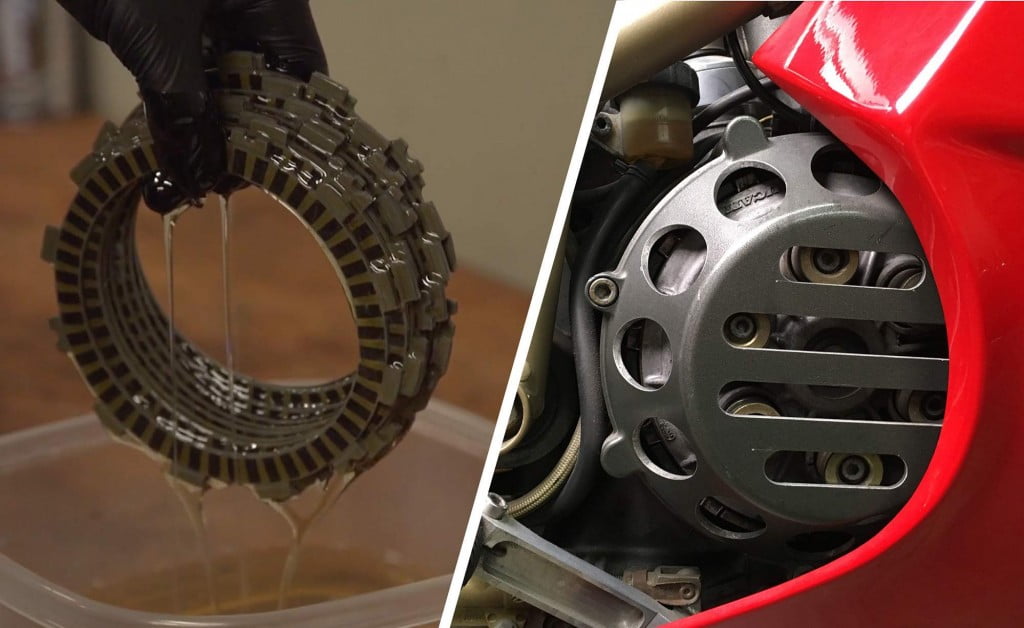Everyone must have heard about clutches in the automobile industry, be it in cars or bikes. The purpose of clutches is the same. However, a lot of people think of a clutch as a lever (in the case of bikes) and a pedal (in the case of cars) that you press to change gears. The mechanical component, however, is quite different. We are going to look at the working principle and classification of types of clutches used in automobiles. This will include Wet and Dry clutches, as well as single and multi-plate clutches. We will try to understand the concept of a clutch irrespective of its application in cars or bikes.
Also read: What is Gasoline Direct Injection – Why is it relevant in modern engines?
Working Principle
The engine of a car or bike produces power and torque according to the size, fuel and other technology that the powertrain comes equipped with. The starting point is the generation of power and torque inside the cylinders. Once the power is generated, it needs to be transferred to the wheels for the vehicle to get moving. That requires a transmission assembly, whose sole purpose is to transfer the power and torque produced by the engine to the wheels, as effectively as possible. To facilitate all this torque transfer without the shocks to the passengers, a clutch is used. It is a mechanical component that engages or disengages the engine from the transmission. To put it simply, the clutch is the link responsible for transferring what the engine produces, to the wheels of the car as useful work. When the clutch pedal is pressed, the engine is disconnected from the transmission and the driver can shift gears. When it is released, the engine and transmission get connected. This is the simplistic explanation of the purpose of a clutch.
Also read: All you need to know about 4WD and AWD – What is a differential?
Classification of Clutches
The clutches can be classified in various ways, for example, dry and wet or single and multi-plate. But since both of these types are connected to one another, we shall divide the types as a wet and dry clutch.
Also read: Battle of transmissions – Manual vs CVT vs DCT vs AMT vs iMT vs Torque Converter!
Single-Plate Clutch – Advantages and Disadvantages
Single-plate clutch systems include an open-air setup which is necessary for providing cooling to the components. It generally has a single plate operation with large rotors to increase the area of contact to allow friction to revolve the plate. Because there is no fluid involved, one plate is enough to cause the necessary friction. Being open to the atmosphere, the dust particles are not collected inside the engine casing but the wear and tear is a lot. Without the oil, the noise levels are high which one must have seen in some bikes. The life is not too long because the dryness causes damage to the components at a higher rate and therefore the maintenance is required at regular intervals. However, the maintenance and repair work becomes easy because of the lack of liquid medium. The usage is generally in low torque scenarios because o flow friction levels and the size of the clutch plate is larger because a single plate is used. To maximize the contact surface larger plates are used.
Also read: MacPherson Strut, Double Wishbone, Leaf Spring – Types of suspension systems!

Multi-Plate Clutch – Advantages and Disadvantages
The multi-plate clutches are bathed in engine oil all the time. There are a lot of advantages and disadvantages to that. Being dipped in oil for its entire lifetime, it requires no additional cooling mechanism. The oil acts as a lubricant, cooling medium, as well as helps, keep the clutch assembly clean and dust-free. The operation is immersed in the fluid and therefore, the noise is damped and the operation remains quiet. The wet clutch requires a multi-plate setup because otherwise, the coefficient of friction is low being dipped in a liquid. Therefore, more plates are required for the clutch plates to stick together and revolve. This reduces the wear and tear substantially. Being in oil all the time, it is placed inside the engine casing. This clutch is used in high-torque transfer scenarios. The life cycle of the wet clutch is longer but the maintenance is a bit tough because of the oil.
Also read: Downsizing and Turbocharging – The new norm!
Image Source: Motorcyclist


